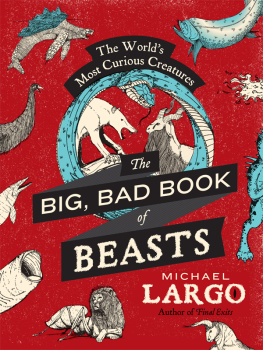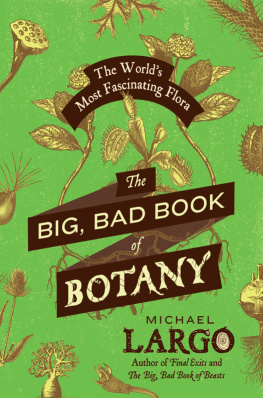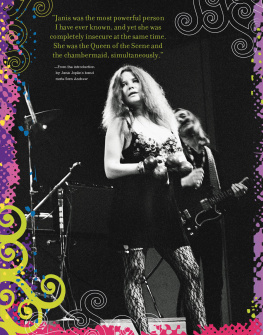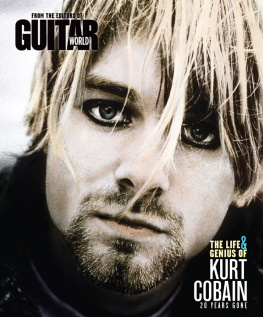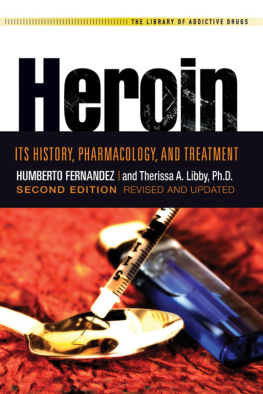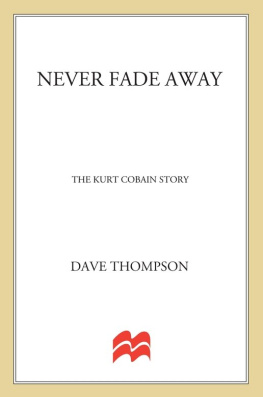GENIUS
AND
HEROIN
The Illustrated Catalogue Of Creativity, Obsession,
And Reckless Abandon Through The Ages
M ICHAEL L ARGO

For Susy
Ces serments, ces parfums, ces baisers infinis
Contents
From the dawn of civilization there has always been a fine line between creativity and self-destruction. An inherent compulsiveness is often required in art to master a level of original thought and superlative skill. It requires everything, some believe, even ones own life. Genius and Heroin chronicles the lives of the famously talented in all fields, including writers, artists, musicians, actors, politicians, military leaders, sports figures, and even scientists, who entwined their genius with one of many paths toward self-ruin.
For many, their greatness and their pain are inseparable. The price for genius and the pursuit of creativity at all costs were steep, even if it resulted with a statue in the town square, a book on the bestseller list, or a picture hanging in a museum. Whether their downfalls were from opiates, pills, alcohol, absinthe, or the slow-motion suicide of obsession, Genius and Heroin examines how the notoriously creative lived and died. I was fascinated with the age-old question, did genius create their torment, or was it their anguish that created their genius? When Samuel Johnson observed, A man of genius is seldom ruined but by himself, he had no idea of the variety of ways this could be achieved.
The means by which artists, writers, and other innovative minds liberated their creative powers, even when they knew it would cause their death, presents an interesting correlation to the type of work they created. The alcoholic produces work differently than the heroin addict, or the speed freak, or the artist plagued by an idea or obsession, although all are equally doomed. There is also a connection between the style of art produced and how they died. Theres a distinction in putting a noose around the neck, a bullet in the brain, or ones head in a gas oven, as opposed to eating or drinking oneself to death or overdosing on drugs. Although the result is the same, we search for a reason to make sense of such endeavors. Ive concluded that, of the five hundred artists examined in Genius and Heroin, for nearly 80 percent, alcohol and drug abuse were ultimately detrimental to their creative output, especially if they lived past the age of fifty, even if many of their best works were produced in the height of their addictions. For a few, less than 10 percent, their only remembered works of creativity were produced as a direct result of some form of drug or alcohol use. For the remaining figures, it had neither benefit nor any other effect on their workother than that it killed them. By examining some of the more lurid details, we can see a surprising link between creativity and self-destruction. It is also a culturally acceptable spectator sport to learn whos who in the creative arena and how they lost their battle to keep feeding their muse.
For the artists and ingenious personalities portrayed in this book, the passion to pursue a creative endeavor required their adaptation to a different set of rules. The basic instinct of self-preservation became secondary to the desire to produce original works. This seems an unexplained glitch but was nevertheless part of the human psyche from the earliest attempts at art.
What drives creativity at the cost of self is a question science has yet to answer. Today, its vogue to view it as a mental illness. Just as bloodletting was once a cure prescribed to alleviate the excessive desires of mad artists, today mental disorders are the assigned diagnoses to explain a creative anomaly. Vincent Van Gogh, for example, persisted at painting without accolades or financial gain for more than fifteen years, and for this unexplainable passion, no less than thirty different medical conditions have been named to account for his genius. Was it genius, or was some form of mental illness the reason Van Gogh could do nothing else but paint? Is it drugs, drink, and obsession that creative minds use to alleviate their condition, and are they the only means to allow genius to bloom unencumbered? Now, the genius of ruin is cut into jigsaw pieces and fit the portrait of the artist as a young bipolar. To disagree with the validity of this synopsis in this age of prescribable disorders would be like dropping a match at the foot of the stake at which one is to be burned, much as it was in an earlier age to question the science of bloodletting. Nevertheless, as psychologist Dr. Stephen Ilardi noted, If throughout the course of human evolution people were as vulnerable to depressive illness as the twenty-first century Americans, we would have long since gone extinct as a species.
Of course, it would be unwise to discount scientific advancements made in understanding the brain, or refute a medical opinion of mental illness diagnosed for anyone. However, the artist as self-sacrifice to his art is a powerful magnet. To the immortal mindset and inherent invincibility of youth, the image of a ruined life as a price to create immortal work seems an easy enough ticket to purchase. For example, no matter what school of literature one admires, it seems striking that many of the great writers were entangled with some form of obsession and devastation. The fact that five of the seven American Nobel Laureates in Literature were alcoholic becomes hard to ignore for a young writer who sets out to create work equally memorable. Poets such as Keats, Byron, and Shelley made their young deaths part of the poignancy of the work, as it is for the twentieth century icons Plath, Woolf, Sexton, and Berryman. How would Sylvia Plaths line The blood jet is poetry and there is no stopping it read today if she hadnt committed suicide and were alive, seen endorsing a product, say, a medicine for diabetesor depression? Ernest Hemingway, likewise, clung to alcohol as a once reliable formula to kick his muse into action, persisting to the bitter end. Of craft and how to find inspiration, he talked of the clean, well-lighted place needed to keep away despair, though many chose the thin ledge, the dank basement, the rooftop in the rain, or under sweaty sheets instead of the sunny studio facing the sea as the place to produce their masterpieces. And even when they had the plush pad, they brought their obsessed self with them. Its only natural to search for reasons, medical or otherwise, to explain self-d estruction and wonder: besides the art, what in life ultimately cast the creative person over the edgewas it a broken shoelace or an atom bomb? In Genius and Heroin we get to see the details behind their fall.
Many creative people throughout history explained the indefinable rationale behind inspiration not as a mental illness, rather as a muse or entity invading from some outside source, whether demon or angel. What is considered genius is a matter of perception. In Roman times, everyone was thought to have one. The etymology of genius traces it to a Latin word that explained how a person came to an original or innovative idea. It was used to describe how a person was possessed by a spirit, an intelligent and good one, emanating from patron gods, or ghosts of dead heroes or descendants. However, at a whim this genius could easily transform in to a dmon, or malevolent spirit, and needed to be watched closely, such that sacrifices made to appease the genius within were always performed on ones birthday. The figures examined in Genius and Heroin didnt wait for once a year; they made some sacrificial offering every day.
Next page

